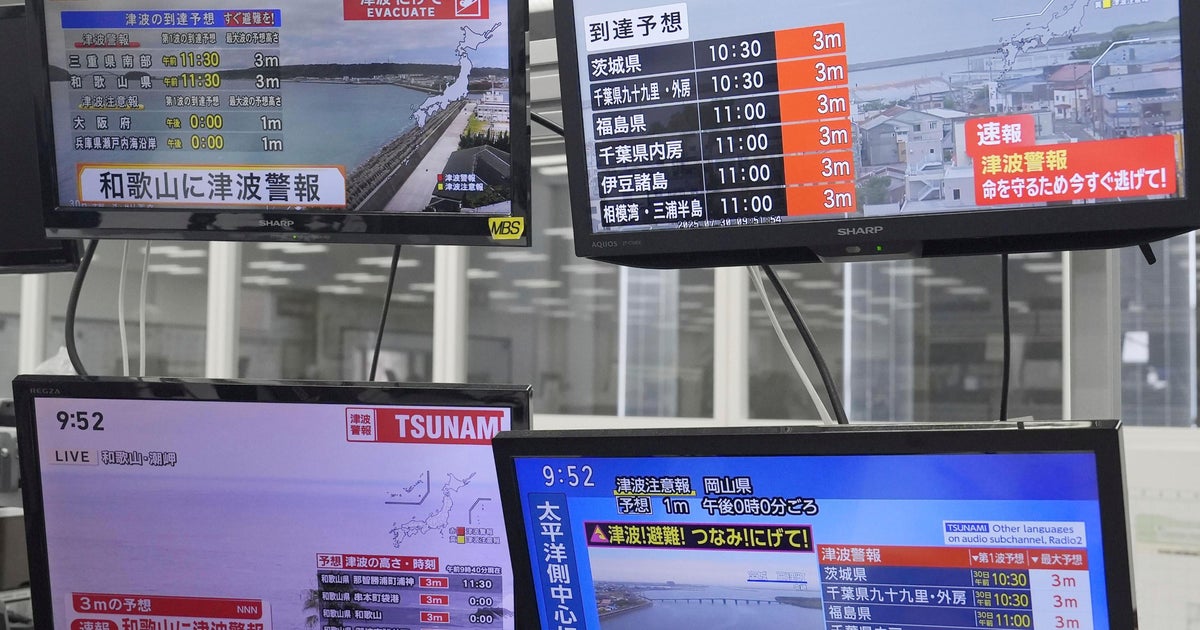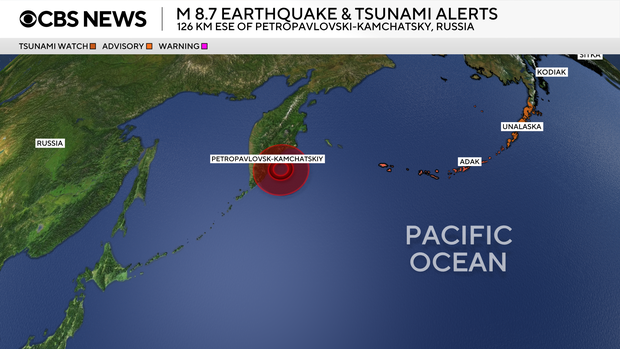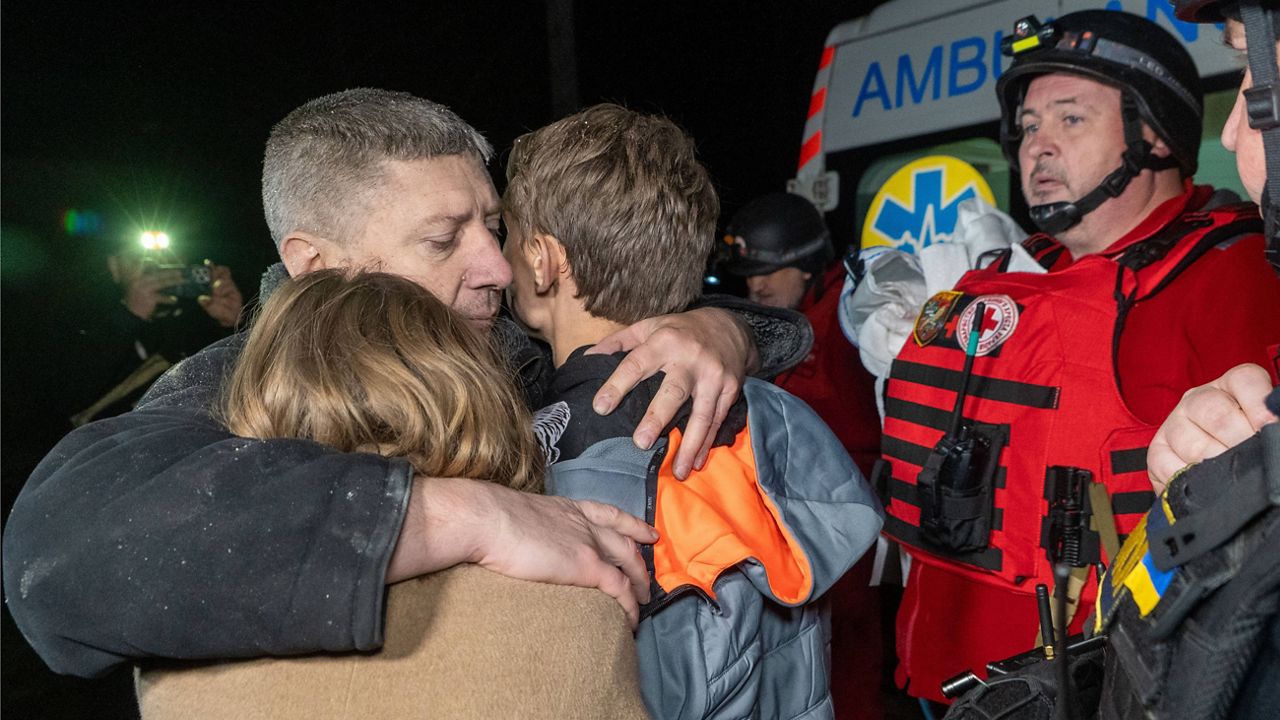A powerful 8.8 magnitude earthquake hit near Russia’s Kamchatka Peninsula, prompting Japan’s meteorological agency to issue a tsunami alert and the National Weather Service to issue a tsunami warning for the state of Hawaii and parts of Alaska on Wednesday.
A tsunami advisory was also issued for parts of Alaska and the entire West Coast, stretching from British Columbia to the California-Mexico border.
Japan’s meteorological agency said the quake occurred at 8:25 a.m. local time on Wednesday and registered a preliminary magnitude of 8.0, later adjusted by the U.S. Geological Survey to 8.8.
CBS News
The Pacific Tsunami Warning Center said waves of 1 to 3 meters, or about 3 to 10 feet, above tide level were possible along some coastal areas of Hawaii, Chile, Japan and the Solomon Islands. Waves of more than 3 meters were possible along some coastal areas of Russia and Ecuador.
“A tsunami has been generated that could cause damage along coastlines of all islands in the state of Hawaii. Urgent action should be taken to protect lives and property,” the National Weather Service said in an alert. The arrival of the first wave was predicted at around 7:17 p.m. local time, or about 1:17 a.m. ET.
“The danger can continue for many hours after an initial wave as subsequent waves arrive,” NWS said. “Tsunami heights cannot be predicted and the first wave may not be the largest. Tsunami waves efficiently wrap around islands. All shores are at risk no matter which direction they face.”
The U.S. Geological Survey said the earthquake hit at a depth of 19.3 kilometers, or about 12 miles.
CBS News
The quake was about 160 miles away from Hokkaido, Japan’s northernmost of the country’s four big islands, and was felt only slightly, according to Japan’s NHK television.
Russia’s TASS news agency reported from the biggest city near the epicenter, Petropavlovsk-Kamchatsky, that many people ran out into the street without shoes or outerwear. Cabinets toppled inside homes, mirrors were broken, cars swayed in the street and balconies on buildings shook noticeably.
TASS reported power outages and mobile phone service failures in the capital of the Kamchatka region. The news agency also quoted a local Russian official as saying residents on Sakhalin Island were being evacuated and emergency services were working at full capacity.
According to Japan’s tsunami advisory, which is a lower-level warning than a tsunami alert, a first wave of tsunami was expected in eastern Hokkaido around an hour and a half after the quake. The government said it set up a task force for information gathering and response in case of any emergency.
A University of Tokyo seismologist, Shinichi Sakai, told NHK that a distant earthquake could cause a tsunami that affects Japan if its epicenter is shallow.
Japan, part of the area known as the Pacific ring of fire, is one of the world’s most quake-prone countries. It’s Russia’s second major earthquake this month that occurred on the same peninsula.
Over a week ago, five powerful quakes — the largest with a magnitude of 7.4 — struck Russia’s Kamchatka Peninsula. And earlier this month, a tsunami advisory for Alaska‘s southern peninsula was issued after a major earthquake with a preliminary magnitude of 7.3 hit the Aleutian Islands area.
On Nov. 4, 1952, a magnitude 9.0 quake in Kamchatka caused damage but no reported deaths despite setting off 9.1-meter (30-foot) waves in Hawaii.
How are tsunami levels categorized?
There are four levels of tsunami alerts: warning, advisory, watch and information statement, according to the National Weather Service. A tsunami warning is the most severe alert, meaning residents should take action due to a tsunami that may cause widespread flooding.
A tsunami advisory has the potential for “strong currents or waves dangerous to those in or very near the water,” according to the NWS. A tsunami watch advises those to be prepared because a distant earthquake has occurred and a tsunami is possible.
The lowest level of alert is a tsunami information statement from the NWS, which advises those to “relax” since an earthquake has occurred, but there is no threat or it was very far away.
This is a developing story. Check back for updates.



